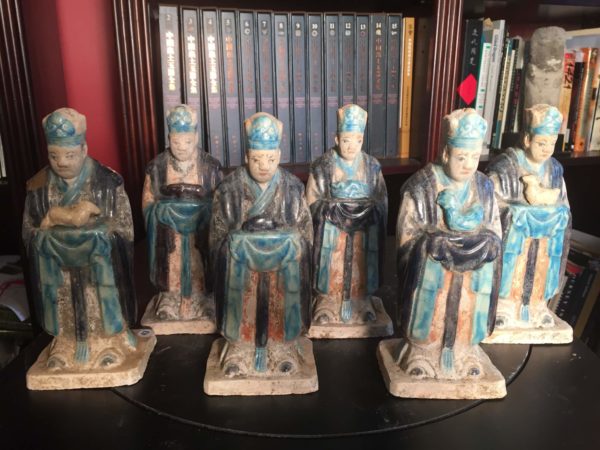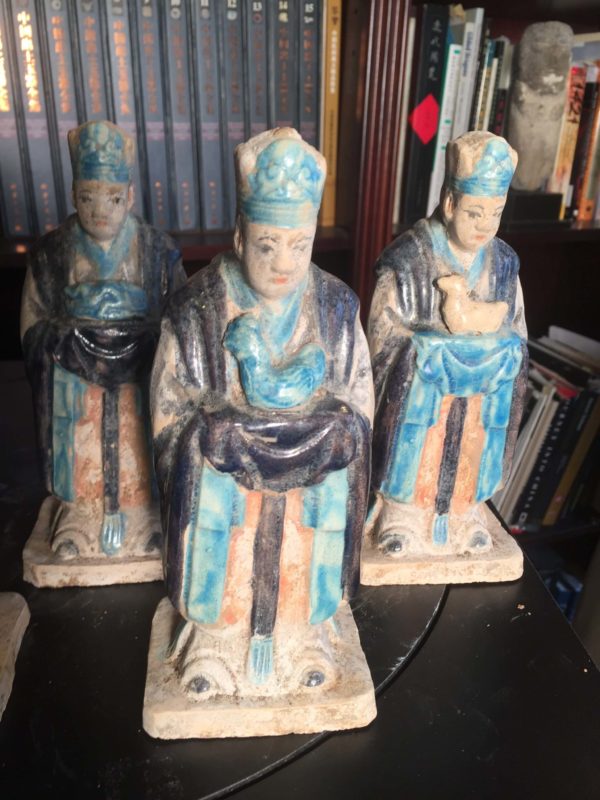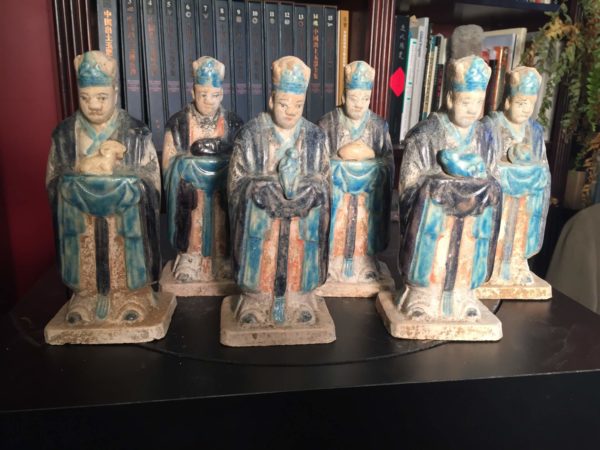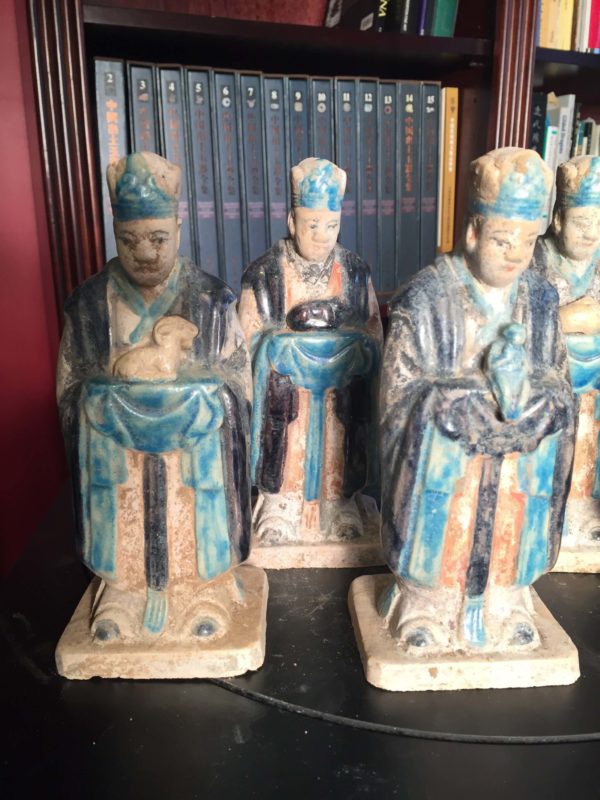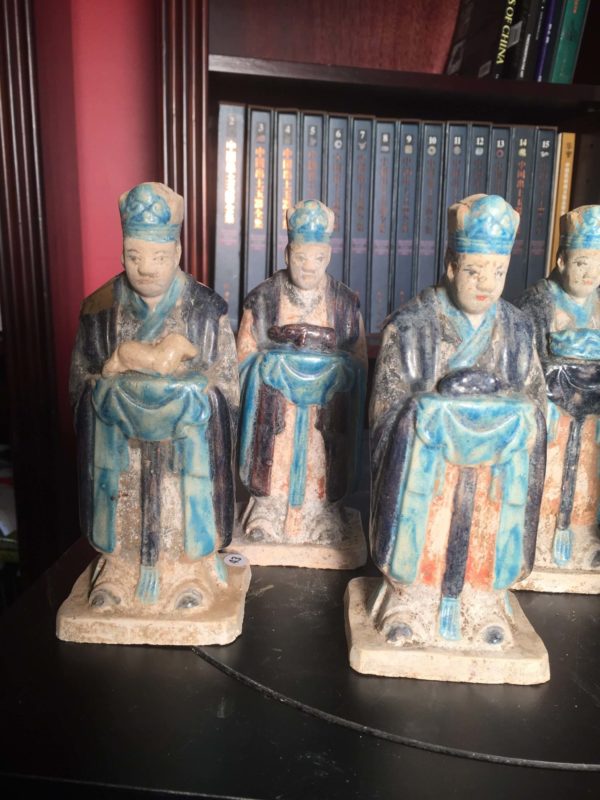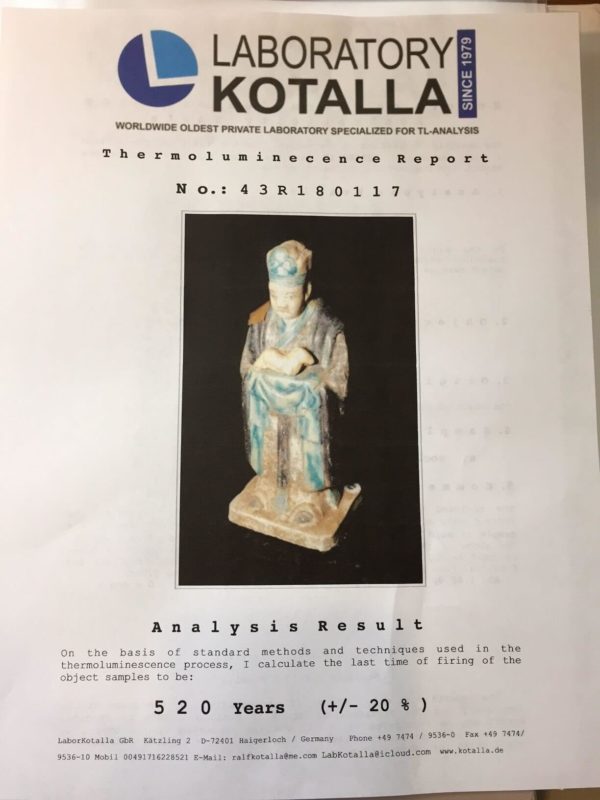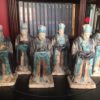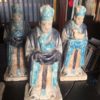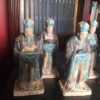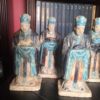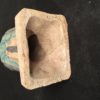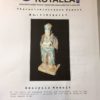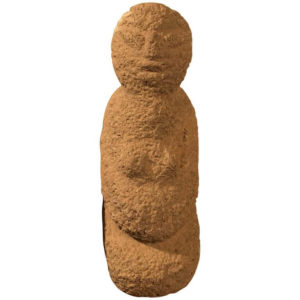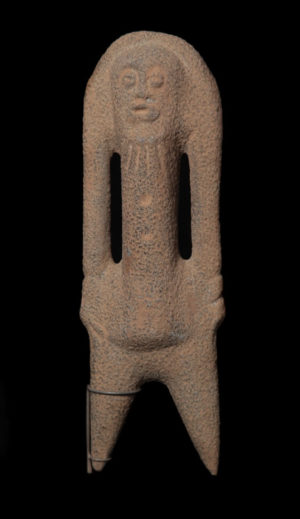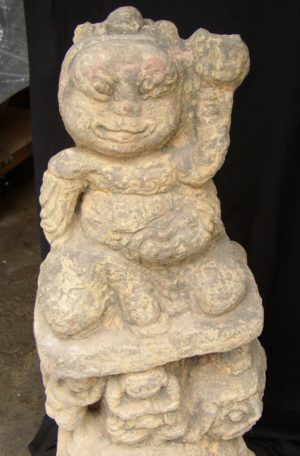Important Ancient Chinese Zodiac complete collection twelve (12) figures, superb quality, each holding a zodiac attribute, Ming Dynasty 1368-1644
$4,850.00
Sold Out
Lifetime GuaranteeEmail to a friend
Important Ancient Chinese Zodiac complete collection twelve (12) figures each holding a zodiac attribute, Ming Dynasty 1368-1644. Superb quality.
Each of these twelve (12) tomb figures each brandish a different animal from the zodiac.
The statues each hold a different animal and are dressed in long gowns with long sleeves, their hands folded in front of their chests caressing one of the twelve celestial animals of the zodiac. They are beautifully glazed in turqoise and cobalt blue colors- a superior feature not often found on these works of art and representative of an important tomb which deserved highest quality pottery representations.
These figures are extremely detailed and highly glazed in turquoise, dark cobalt blue, and highlighted in red and white cold painted pigments. Most of the original colors remain in tact. The zodiac figures were often placed in a north-south direction in coffin chambers to represent the progress of time. People hoped that such an arrangement would encourage the god to time to guard the tomb.
Twelve (12) Zodiacs are: rat, ox, tiger, rabbit, dragon, snake, horse, sheep, monkey, rooster, dog, and pig or boar. These correspond to the twelve earthly branches and are infrequently found in wealthy tombs of the elite and wealthy ancient Ming Chinese.
Dimension: eight inches tall
Condition: Superb, all figures are original and intact with finely preserved glazes and pigments.
Provenance: Old European collection originally acquired in Hong Kong 1990s and legally imported into the USA.
Guarantee: Our figures are guaranteed to be crafted during the Ming Dynasty (1368-1644). A thermoluminescence TL report sampling accurately confirms age of these sculptures from 500-600 years ago
History:
The Ming dynasty then known as the Empire of the Great Ming ruled China for 276 years (1368–1644) following the collapse of the Mongol-led Yuan dynasty. This dynasty has been described as "one of the greatest eras of orderly government and social stability in human history," and was the last imperial dynasty in China ruled by ethnic Han Chinese.
The English word zodiac derives from zodiacus, the Latin form of the Ancient Greek zōidiakòs kýklos , meaning circle of little animals. Zōidion (ζῴδιον) is the diminutive of zōion (ζῷον, "animal"). The name reflects the prominence of animals among the twelve signs.
Essentially, the twelve divisions or signs is a celestial system, or more specifically an ecliptic coordinate system, which takes the ecliptic as the origin of latitude , and the position of the Sun at vernal eqinox as the origin of longitude.
The zodiac is the circle of twelve 30° divisions employed by western astrology and (formerly) astronomy. The western zodiac is centered upon the ecliptic, the apparent path of the sun across the celestial sphere over the course of the year. The paths of the moon and visible planets also remain close to the ecliptic, within the belt of the zodiac, which extends 8-9° north or south of the ecliptic, as measured in celestial latitude. Because the divisions are regular, they do not correspond exactly to the boundaries of the twelve constellations after which they are named.
Item Details
- Dimensions: N/A
Related Art
(802) 279-7601
(802) 279-7601
(802) 279-7601
(802) 279-7601
(802) 279-7601
(802) 279-7601
(802) 279-7601
(802) 279-7601
(802) 279-7601
(802) 279-7601
(802) 279-7601
(802) 279-7601
(802) 279-7601
(802) 279-7601
(802) 279-7601
(802) 279-7601
(802) 279-7601
(802) 279-7601
(802) 279-7601
(802) 279-7601
(802) 279-7601


